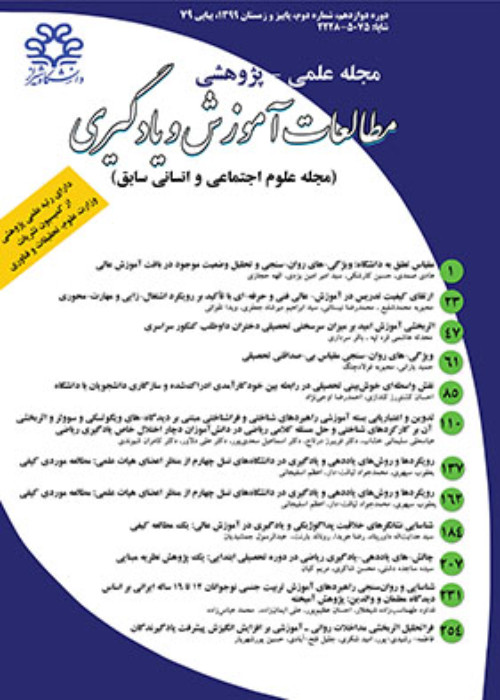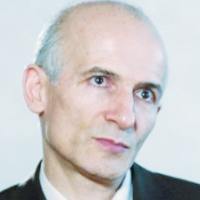Identifying Desirable Structure Components in Higher Education: Paving the Way for Lifelong Learning
Researchers and policy makers are challenged to develop effective learning systems that support lifelong learning. Throughout the learning process, human experiences create knowledge and transform it into skills, attitudes, values, emotions, and beliefs (Jarvis, 2001). Learning can result from formal, non-formal or informal interactions (Chris Duke & Hinzen, 2010). Because learning occurs every day and during every period of life (Lena & Liv, 2006), finding appropriate nomenclature for how, where, and why people learn has spawned many new phrases in the literature including life-long, life-wide, and lifedeep learning (Bell, 2012). According to a recently released international report through a partnership with the Pearson Learning Company and Jobs for the Future (JFF) (Deegan & Martin, 2018), the world is facing a crisis due to a growing disconnection between higher education and the skills needed for work. In their words, “we are on the cusp of a new wave of postsecondary education reform” (p. 6). Clearly, the future demands a more dynamic, flexible, and equitable educational structure that acknowledges the necessity of teaching specific skills while at the same time recognizing that the skills of today will become obsolete in the future thus requiring learners to adapt to a lifetime of learning. Over time, the concept of the “ideal university” went through phases, sought different identities and nomenclatures such as “entrepreneurial” (Clark, 1998), “successful” (Shattock, 2010), “enterprising” (Marginson & Considine, 2000), “innovative” (Burton Clark), “adaptive” (Sporn, 1999), and “University of Learning” (Bowden & Marton, 2003). Studies of organizations have introduced theories such as Complexity, Chaos and Quantum to explain the dynamically complex milieu in an unpredictable world. These theories lead us to an uncertain future (McDaniel & Walls, 1997). Chaos Theory in organizational development describes educational systems as unclear and chaotic (Murphy, 1996) and existing in a dynamic environment. This system scans and senses the external environment and then makes internal adjustments and developments in order to meet the demands of the changing external environment (Morrison, 2008). Consequently, higher education needs other models of universities that are based on more flexible structures. Higher education has a “business side” (the domain of building, supplies and finance) and an “academic side” (the domain of teaching and research) (Clark, 1986). Responding to subsequent changes in higher education missions, changes in the educational environment and the shifting needs cause higher education to be different from the way it is today and there will be mass adoption of learning styles and methods in universities and colleges (J. Q. Anderson, Boyles, & Rainie, 2012; Lacková & Karkalíková, 2011). Therefore, lifelong learning must be seen as a never-ending quest for learning better ways of living with each other and thus should be the final goal of learning in educational systems. There are different goals in formal, non-formal and informal learning all over world. Based on these differentiations, the universities play different roles in different societies, so there is no unique model for all universities around the
The purpose of this paper is to identify the desirable structural components of a higher education system so as to pave the way towards the expansion of lifelong learning.
The study was a phenomenological research that collected data by carrying out semistructured in-depth interviews with 16 experts in the field of education. Using Moustakas's structured method of inductive data analysis, the interviews were inductively coded and analyzed. The reliability of the interviews was verified through credibility, transferability measures.
Given the broadness of the issue under investigation in the study, the results were divided into two main categories: a) those pertaining to the identification of the life-long learning criteria, and 2) specification of a desirable university structure that can contribute to life-long learning. Concerning the first category, the results of the study revealed four main thematic clusters, and 32 themes for life-long learning. On the other hand, regarding the second category, the results of the study provided three major thematic clusters, 11 subsidiary thematic clusters, and 38 themes for a desirable university structure than can contribute to life-long learning.
Lifelong learning components were categorized into four pillars: learning to learn, learning to do, learning to live together, and learning to be. Formal structure, informal structure and invisible structure were the effective factors identified for a desirable university structure. Formal structure involves formalization, complexity and centralization; informal structure, on the other hand, encompasses informal relationships, trust-based relationships, externally-oriented interactive relationships, and emotionally inclusive relationships. The invisible structure of the university is formed around the political, social, behavioral and scientific axes. Higher education is facing massive pressure from dynamically complex milieus. Technological change, globalization, economic and social change, and virtual reality are changing the shape of higher education. Regarding the international reports, there is growing disconnection between higher education and the skills needed for work and life as a whole. Lifelong learning focuses on the individual’s demands in his/her life and career and encompasses learner needs in lifetime. Therefore, learning to learn, learning to do, learning to be and learning to live together could solve our current challenges and problems in the world. Change in the environment is inevitable, constant and dynamic. In order to retain vibrancy, organizations must not only acknowledge the need for change but also be willing and able to exchange outdated inefficient structures for more robust adaptable alternatives.
- حق عضویت دریافتی صرف حمایت از نشریات عضو و نگهداری، تکمیل و توسعه مگیران میشود.
- پرداخت حق اشتراک و دانلود مقالات اجازه بازنشر آن در سایر رسانههای چاپی و دیجیتال را به کاربر نمیدهد.



